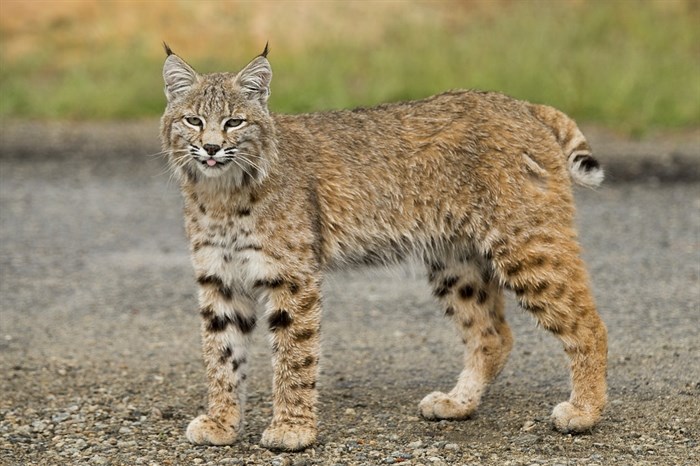
One of thousands of photos submitted as part of a UBC Okanagan study on bobcats and lynx.
Image Credit: Coleman Jackson
May 26, 2016 - 1:00 PM
KELOWNA - A study of bobcat and lynx distributions in B.C. is already yielding some surprising preliminary findings.
University of British Columbia Okanagan biologist in training T.J. Gooliaff put out a request for photos of bobcats and lynx earlier this year and has been astounded by the engagement he’s received.
“I got between two and three thousand photos in total from all across the province,” he says.
The study, which Gooliaff expects will be finished next summer, explores the current provincial distribution of the two species.
“There have been some surprises, like bobcat photos from as far north as Quesnel and Prince George, which is quite a bit further than we thought,” Gooliaff says.
The study also involves looking at historic distributions to determine if their range has shifted over the past few decades.
“If that’s the case, I believe it’s a climate change story that bobcats are moving northward,” Gooliaff says.
Along with their submitted bobcat and lynx photos, many participants have also asked to see the results when the study is complete.
“People are asking lots of questions and getting really excited about bobcats and lynx, which is really cool,” Gooliaff says.
He doubts the study could have happened even 20 years ago, before cell phones were so ubiquitous.
“Nowadays everyone has phone in their pocket so there’s way more data being collected,” he says.
He’s still collecting photos for the next six to eight months, and says the more he gets, the better the results will be.
If you can help, send photos, and the location, to TJ Gooliaff at tj.gooliaff@ubc.ca.
Ideally, the location will include UTM or LAT/LONG coordinates, otherwise the name of the nearest road or landmark, or nearest town, watershed or management unit will do. Those submitting photos are asked to include how far the photo was taken from the nearest road, landmark or town, as well as the date the picture was taken.
The photos don't have to be great photography, they just have to show a bobcat or a lynx, or even just a part of one, Gooliaff says. It's also okay if the pictures are blurry or dark — they're still useful for the study.
To contact a reporter for this story, email Charlotte Helston or call 250-309-5230 or email the editor. You can also submit photos, videos or news tips to the newsroom and be entered to win a monthly prize draw.
We welcome your comments and opinions on our stories but play nice. We won't censor or delete comments unless they contain off-topic statements or links, unnecessary vulgarity, false facts, spam or obviously fake profiles. If you have any concerns about what you see in comments, email the editor in the link above.
News from © iNFOnews, 2016